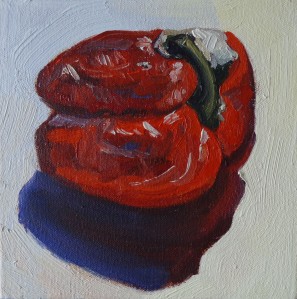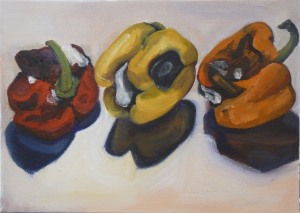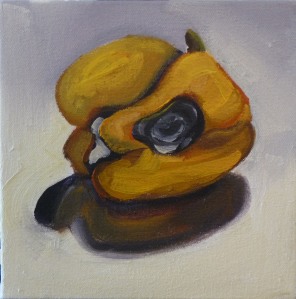Originally posted on 05-06-2019
Today concludes the last day of my residency at the Vermont Studio Center. This is their 35th year of offering Vermont residents a week to create and follow their artistic inclinations. I was lucky enough to be accepted this year and even luckier to have permission to take a week off of teaching. This is my first residency program and frankly, it was long overdue.
In the few and short years that I have been committed to getting my teaching license and getting my career going, my artistic practice has taken a back seat. I can count the number of the paintings I’ve made in the last three years on one hand. Don’t get me wrong, I make art all the time, but it’s small things: a drawing here, an oil pastel there, an example for my students’ assignments mostly. Yet, it has been a significant amount of time since I was as creative and productive as when I was in art school.
Monday, I arrived with a project in mind, 6 large canvases, and a head cold. Still, I committed to making the most out of my time here and not letting this opportunity go to waste. I quickly stepped back into the life of a studio artist. I painted from 8am-8pm like there was no tomorrow.
I created a body of work unlike anything I’ve previously made. I wasn’t sure were I was going with things, yet I trusted instinct. At the end of the week, I had a studio visit with a guest artist. She asked me basic questions that I’ve been asked dozens of times before: what is your work about? what is your practice like? and who are you looking at? I looked at her dumbfounded. After all these years, I didn’t have answers. I talk art all the time and it is my job, but since becoming a teacher, I have lost track of who I am as an artist. It didn’t hit me until that moment. In the past, I’d be able to list off at least a dozen artists I admired and who influenced me. This week, I couldn’t name more than two. But these were artists I was looking at 3-5 years ago. I didn’t know who I was looking at today, because I wasn’t looking at anyone! Who am I as an artist now?
The question left me shook. For years, I had been questioning myself as an artist. Was I still one? Was I any good to begin with? Was it worth still pursuing? This week, I made the decision that it was. I was still an artist. I loved being back in the studio; it felt like home. Furthermore, I decided that I didn’t want to loose the practice that I had re-found.
Today, as the this residency comes to an end, I re-commit to my practice. I do not want to lose this side of me. Working on my practice will also help me as a teacher. If I can re-connect with my artistic side more, I can help my students connect with their’s as well.




